
- In today’s world terrorism is not only about religion, ideology and violence, it is also a business activity that has various sources of finance.
- Terrorists have increasingly turned to the use of the dark web as a source of funding for their activities.
- Trade-based money laundering (TBML) remains one of the most preferred techniques used by terrorists in the laundering of their illicit funds.
- The complex structure of arms trafficking, smuggling of artefacts, and the drug trade all work in synergy to finance terrorism and destabilize regions around the globe.”
In today’s world terrorism is not only about religion, ideology and violence, it is also a business activity that has various sources of finance. Ranging from cybercrime and organized crime to money laundering and the use of the dark web, contemporary terrorist groups employ creative strategies to raise funds for their activities without getting noticed and condemned globally. These secretive actions cause a severe threat on the global level, affect all countries and complicate the fight against terrorism.
The Dark Web: A Hub for Illicit Operations
Terrorists have increasingly turned to the use of the dark web as a source of funding for their activities. One of the darkest facets of the Internet, which can only be accessed through specialized software such as the Tor browser, provides a market for numerous illegal goods and services, including drugs, arms, and even human trafficking happens here. For terrorists, Bitcoin and other similar cryptocurrencies are often preferred means of payment and for transactions within the dark web domain where they can easily solicit donations, and sell goods and services without being easily identified.
For instance, terrorist groups like al-Qaeda have been known to be involved in the use of the dark web to seek funds for their activities. In one instance, potential donors were asked to contribute to purchasing weapons, with prices listed as if on an e-commerce platform: $400 for an AK-47 automatic rifle, much larger amounts for better equipment. This helps them to avoid being observed and managed by the International community, thus continuing with their operations unchecked.
Encrypted Platforms: The New Market for Financing Terrorism

Other popular means of communication include encrypted messaging applications such as Telegram is another preferred choice of terrorists as well as cybercriminals. These platforms provide people with means of communication in secret and secured chat sections which are very hard for intruders to infiltrate. By infiltrating these channels, intelligence analysts can obtain vital information on the methods used by terrorists to finance their operations.
A notable case involved an identified pro-ISIS Telegram channel offering guidance on constructing and utilizing drones for terrorist acts in Western countries, with references to apparently innocent merchandise accessible in the United Kingdom and the United States. The instructions were made to build a missile that would be a potential weapon of terror and mass damage. Likewise, terrorist groups like the Ibn Taymiyya Media Center have used Twitter to seek Bitcoins for weapons via a march known as “Jahizuna” meaning “Equip Us” which was one of the first and landmark uses of cryptocurrency in terrorism fundraising.
Organized Crime and Terrorism: Dangerous Nexus
The link between organized crime and terrorism is more than an occasional or simply opportunistic relationship. Terrorist groups and criminal organizations have evolved over the years that blur the lines between criminal activity and terrorism. Terrorist groups and criminal organizations (like gangs or mafia) often work together and benefit from each other’s actions, where terrorists take advantage of chaos and instability, Criminal organizations benefit from terrorists’ ability to create chaos, making it easier for them to operate undetected. This dangerous connection is even more apparent in areas where there is a lack of central government control and efficiency which allows a criminal and terrorist network to flourish.
Hezbollah terrorist groups have diversified sources of income, making it challenging to distinguish between terrorism and organized crime over the years. Contrary to its depiction as a resistance movement, Hezbollah has been engaged in drug smuggling, especially in South America where it partners with drug trafficking organizations. This cooperation enables Hezbollah to use the Lebanese diaspora in Africa and the Americas to transport drugs and to money laundering which funds its operations around the globe.
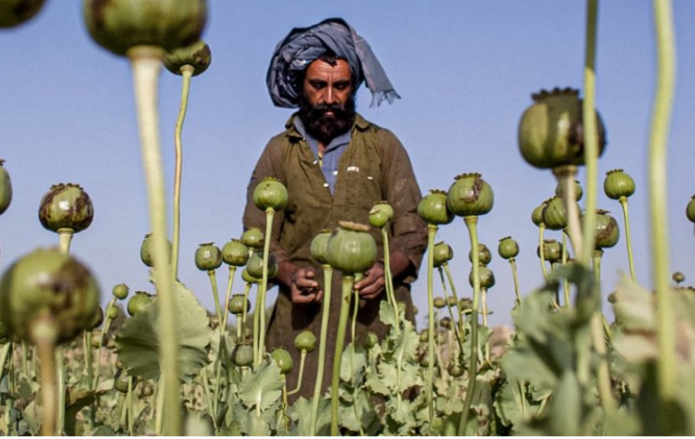
An example is the accusations of the Venezuelan authorities allegedly providing Venezuelan passports to Hezbollah’s agents and allowing them to traffic drugs. It enabled Hezbollah to move drugs from Venezuela to Europe and so fund these terrorist actions very nicely.
A similar example includes the role of the Taliban in the management of the opium trade in Afghanistan. For decades, the Taliban has been involved in the narcotics trade, including exporting Opium and heroin that produced billions of dollars every year. The group levies taxes on local farmers and controls smuggling activities and smuggling routes, which makes it enriching for the Taliban in finance, to fund its rebellion against the Afghan government and coalition forces where necessary. This very profitable business helps the Taliban to acquire weapons, pay employees and provide its needs and wants during its long-term funding cycles, which makes it one of the most financially sustainable terrorist organizations.
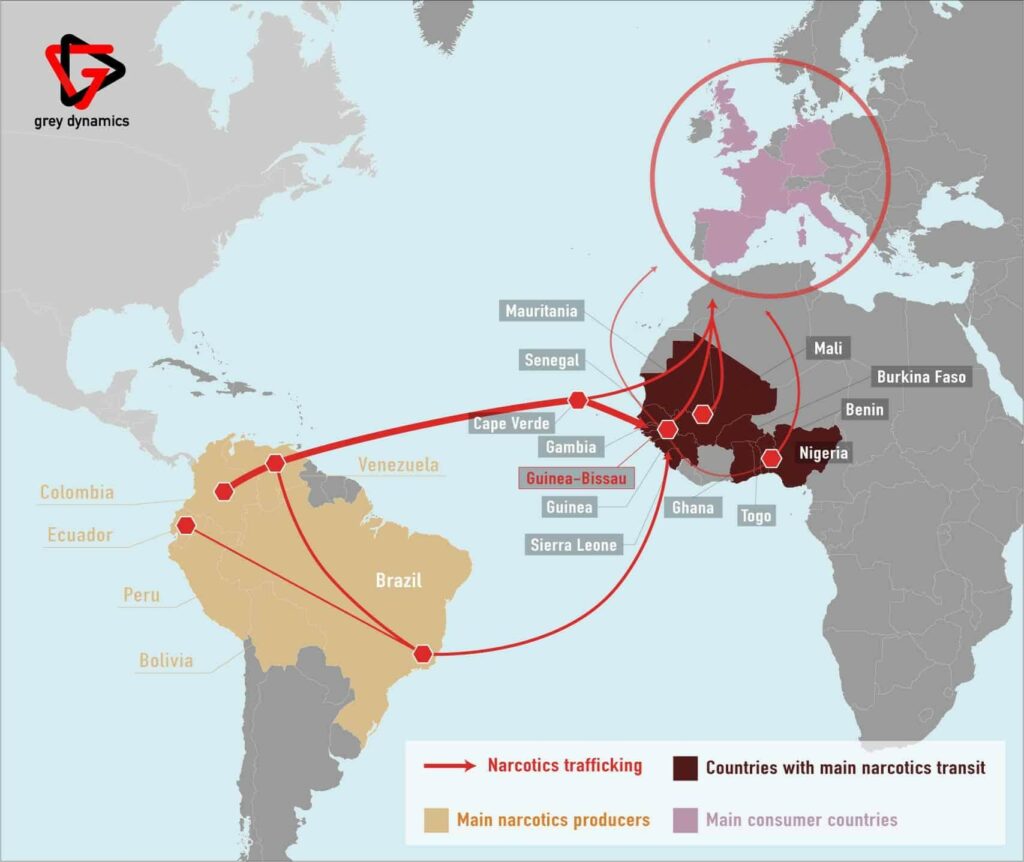
In West Africa, groups like Boko Haram and Al Qaeda in the Islamic Maghreb (AQIM) have also engaged themselves in organized crime including narcotics and human trafficking. Thus, the involvement of AQIM in cocaine trafficking through the Sahel is well known. Traffickers move narcotics (drugs) from Latin America to West Africa and then supply them to Europe, with terror groups like AQIM charging for providing the passage. This has enabled AQIM to financially sustain its operations such as buying arms and recruitment hence enhancing the group’s sustainability and growth in the region. In addition to the narcotics trade, human trafficking is also one of the important revenue streams for terrorist groups. In conflict-affected areas such as Syria and Iraq, ISIS exploited human trafficking mainly in the sale of women and children into slavery. The group created well-organized supply chains that involved the capture of people, their sale and transportation across borders where they achieved impressive sales receipts for the funding of its propaganda campaigns to instill fear in the local populace.
These examples illustrate the symbiotic relationship between terrorism and organized crime. Terrorists rely on the criminal ecosystems for additional funds and access to goods and services, while criminals leverage the insecurity generated by terror attacks. The outcome is the synchronization of two significant factors that threaten regional stability and the world.
Trade-Based Money Laundering: A Global Challenge
Trade-based money laundering (TBML) remains one of the most preferred techniques used by terrorists in the laundering of their illicit funds. It entails altering the nature of trade transactions –mainly the value of goods and or services to enable terrorists and their financiers to launder money to support their activities. This method is very hard to track since it operates under the guise of normal business which makes it a very critical area for law enforcement not just in the region but all over the world.
Another way the terrorists use to fund their activities is through trade-based money laundering. For instance, Hezbollah has been in the business of outsourcing operations like; acquiring scrap automobiles in the United States, importing them to West African countries, and distributing them in the black market through outlets owned by the group or fake entities. The profits are then reinvested in Lebanon through other related and often participating financial institutions. The Lebanese-Canadian Bank, which facilitated many of these transactions, was ultimately closed down due to U.S. sanctions to dismantle such complex networks as this.
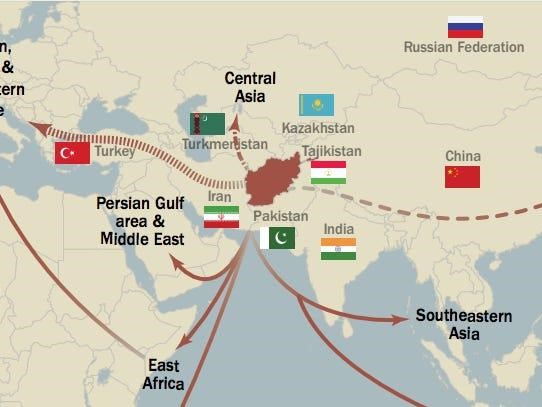
Similarly, TBML has been used by the Taliban in Afghanistan through the purchase of commodities to fund its operation. The group is mostly involved in the import and export of the products especially in areas where the government has limited control. For instance, the opium business in Afghanistan is the main source of funding through which the Taliban is supported and the opium trade is presented as a trade that is disguised as a legitimate trade in agricultural products. The Taliban has control over smuggling routes from Pakistan, Iran, and Central Asia that help disguise illicit trade behind legal commerce. This method allowed the group to avoid sanctions and the attention of the international financial institutions which made them remain highly profitable.
TBML can also be found in Latin America where terrorist organizations and drug cartels assist together in the laundering of drug money. For instance, the Revolutionary Armed Forces of Colombia (FARC), which was involved in the drug business earlier, used to transport illicit money. FARC used the gold mining industry for money laundering especially inflating the value of gold exports to cover up illicit gains from the drug business. In 2019, the U.S. authorities revealed a single case where drug proceeds were funneled through the trading of gold in Colombia and Venezuela, to provide insight into just how entwined TBML is with the financing of both criminal and terrorism financing activities.
In West Africa, al-Qaeda in the Islamic Maghreb (AQIM) has also engaged in TBML. The group uses trade routes to smuggle products like arms, narcotics and prohibited merchandise through the Sahara Desert. These goods are often processed in disguise as some other shipment of goods such as meat, livestock textiles, etc. AQIM and its affiliated groups have been accused of tampering with invoices and customs documents which make it hard for law enforcement officials to track the origin and destination of such transactions.
ISIS was also engaged in TBML especially when it dominated geographical territories in Iraq and Syria. The group manipulated the trade routes and was involved in overcharging of commodities passing through its areas. For example, ISIS seized and refined oil fields in northern Iraq and Syria and exported crude via the black market. To hide the money trail, the group would create and sell fake export documents and adjust the prices to facilitate money laundering through middlemen from Turkey and Syria. The revenues generated from these transactions were channelled back to fund ISIS’s warfare, procure weapons, and pay fighters.
ISIS and the Battle for Resources
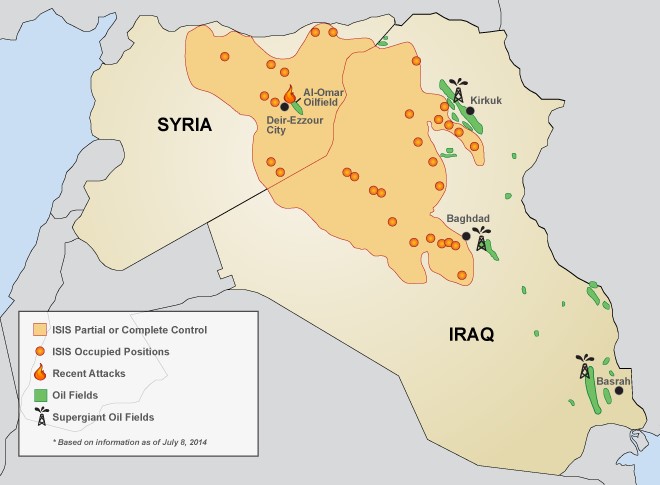
ISIS is one of the most dangerous terrorist organizations that has been involved in many criminal activities, including extortion scams that provided them with numerous sources of illicit revenues. ISIS was at its strongest in 2014 when it gained control of vast portions of Iraq sections of Syria and some critical oil facilities. ISIS received millions of dollars a day from the sale of oil mostly to intermediaries in Turkey and Syria in the black market, This income was used not only for the financing of military actions but also in the creation of a proto-state that offered social services, education, and policing to ensure the continuity of the group’s control over the occupied territories.
ISIS also practised extortion and forced the owners of businesses and households within ISIS’s area of control to pay taxes. Kidnappings for ransom, looting of antiquities, and trafficking of human organs and drugs have been attributed to ISIS as the group is ready to use any assistance available to support its operations. Although the territorial base of ISIS has been destroyed, the group is actively developing methods of obtaining funds through cybercrime, cryptocurrencies, and other hidden means to continue its activities and support its proxies worldwide.
Arms Smuggling and the Global Black Market
Another such determinant of terrorism financing is the smuggling of illicit arms. Since the fall of Muammar Gaddafi, Libya has been a magnet for traffickers, with weapons stores poured into the black market. These arms were immediately captured by terrorist groups such as Al-Qaeda in the Islamic Maghreb (AQIM) which increased its level of operations. Reports from organizations such as Conflict Armament Research (CAR) reveal that the same batch and manufacturer of weapons have been used in numerous attacks in the Middle East and West Africa regions showing how international arms supply and terrorism are interconnected.
AQIM, which initially relied on kidnap for ransoms, has also expanded its funding structure through drug trafficking and arms smuggling, the turmoil in Libya has provided the opportunity to shift drug channels on new smuggling routes. This flow of arms and other illicit goods has increased with more threats to the security of Europe.
The Illicit Trade in Antiquities
Besides, drugs and arms, illicit trafficking in the cultural artefacts has turned into another significant source of terrorist financing. For example, jihadist networks in Syria use social media such as Telegram to advertise stolen artefacts for sale, which include coins and ancient figurines. The transactions are kept under the cloak of anonymity, so it is complicated to identify the buyers, and the money generated from these sales is used to finance terrorism.
Experts estimate the black market for stolen artefacts is valued at billions of dollars, the product of illicit traffic passes through various layers from conflict areas in Syria and Iraq to private collections and legitimate markets in Europe While some suggest buying these artefacts to prevent their destruction, this approach funds the terrorists who sell the items.
Europe’s Battle Against Terrorism Financing
European nations have stepped up their efforts to combat terrorism financing in recent years To investigate and stop the funding of terrorist operations, several nations, including France, Belgium, and Germany, have passed stronger anti-money laundering legislation and established specialized agencies. The European Union (EU) has created a coordination post of a counter-terrorism coordinator across Europe to enhance cooperation with member states in to fight against terrorism.
The Terrorist Finance Tracking Program (TFTP) and other initiatives have been crucial in locating and seizing assets associated with terrorism. Countries have also been increasing intelligence-sharing and working closely with international bodies such as the Financial Action Task Force (FATF) to identify and mitigate vulnerabilities in the financial system that terrorists exploit.
A Recent Example: The Knife Attack in Germany
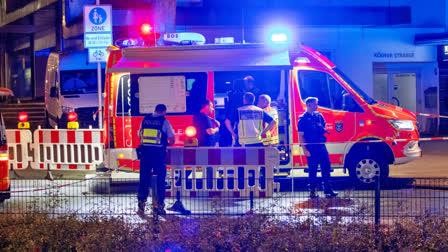
The knife attack that took place in Solingen city Germany recently shows that ISIS-inspired terrorism is still active. On September 24, 2024, a 26-year-old Syrian man named Issa Al H. carried out a deadly attack by stabbing and axing three people to death and injuring eight others at the “Festival of Diversity”. The suspect, who confessed to the crime, was motivated by ISIS and sought to “murder as many non-believers as I could.” The ISIS later took responsibility and said that the attacker attacked Christians “in revenge for Muslim blood in Palestine and around the world although the group’s claim has not been independently verified, however, the event sparked discussion on immigration policies in Germany and caused concern regarding the potential increase in the number of lone-wolf attacks fueled by extremist ideologies.
Iran’s Terrorism Funding: From Middle East to Europe
As a result of the Iranian revolution in 1979, several nations have accused Iran of funding, arming and imposing training and safe passage for non-state militant organizations including Hezbollah in Lebanon, Hamas in the Gaza Strip, The Islamic Jihad (IJ) and the Popular Front for the Liberation of Palestine (PFLP) among others. Some of them are recognised as terrorist groups by many countries and international organisations including the EU, UN and NATO. However, Iran considers them as “national liberation movements” that are justified to resist Israel’s military invasion.
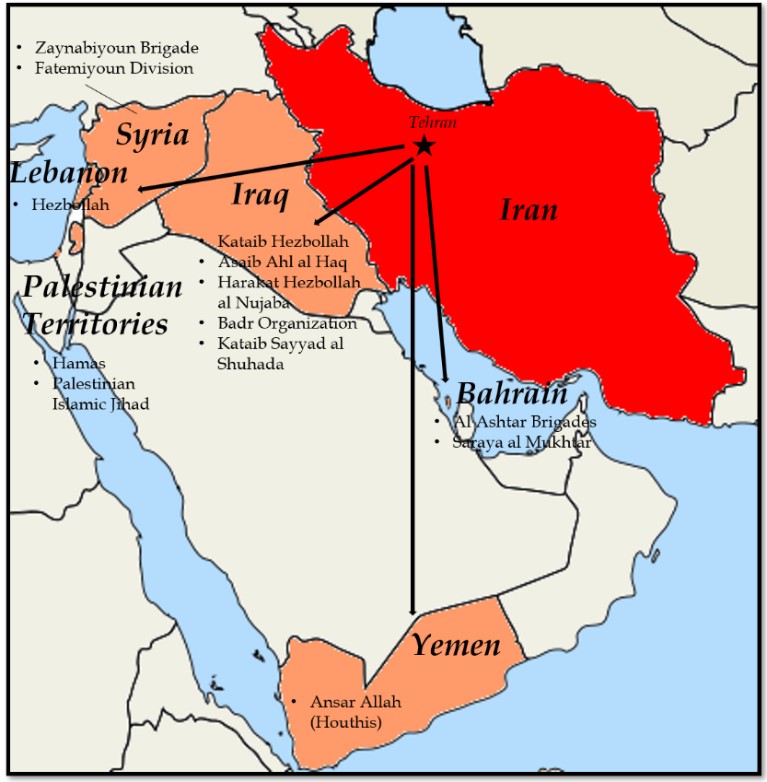
These groups are being utilized by Iran to act as its agents in the Middle East and Europe, destabilizing regions and conducting acts of terrorism against the West. The Quds Force, a specially designated unit of Iran’s Revolutionary Guard is involved in the process by supplying weapons, training, and funds to various militias across Bahrain, Iraq, Lebanon, Palestine, Syria, and Yemen. Most of these countries including the U. S, France and Argentina have alleged that Iran has planned to carry out assassinations or bombings within their territory and as a result imposed economic sanctions on the Iranian regime.
Conclusion: Following the Money to Combat Terrorism
The complex structure of arms trafficking, smuggling of artefacts, and the drug trade all work in synergy to finance terrorism and destabilize regions around the globe. Challenging these networks is not only a matter of cutting off the supply of immoral commodities, but also eradicating the funding channels that facilitate the growth and development of terrorist cells.
While cyber analysts and counterterrorism specialists continue performing their work, the global community should remain united in its efforts to counter terrorism financing. Only then it is possible to reduce the threat these groups pose to global security and ensure a safer future for all.
References:
- https://www.thehindu.com/news/international/stabbing-incident-germany-solingen-death/article68560262.ece
- https://home-affairs.ec.europa.eu/policies/internal-security/counter-terrorism-and-radicalisation/fight-against-financing-terrorism_en
- https://en.wikipedia.org/wiki/Iran_and_state-sponsored_terrorism
- https://youtu.be/S80biBdpOiE?si=GXk7dFbQ7CPcreBz
- https://youtu.be/1gDvIexJYXE?si=s85m0RAQVOEZDYY6
- Gravitas Plus: How do terror outfits make money? – YouTube
